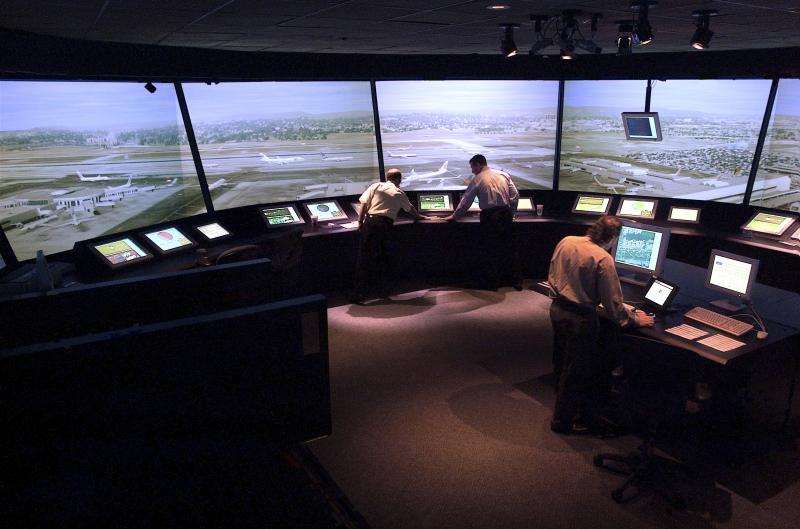NASA-developed air traffic management tool deployed

A new software tool developed by NASA, and being deployed by the Federal Aviation Administration (FAA), is positioned to help air traffic controllers manage the nation's skies.
The software, called Terminal Sequencing and Spacing (previously called TSS, now TSAS), will help air traffic controllers manage airspace within a doughnut-shaped region of sky that begins five miles from a major airport and extends outward about 35 miles. This new technology will allow pilots to better use flight deck automation to fly fuel-efficient, optimized profile descents, which streamlines glide paths toward the runway reducing fuel use and noise toward an airport, and safely permits more flights to merge together at a point where they can be cleared for final approach and landing.
"With TSAS, NASA's aeronautical innovators have developed another valuable tool that will benefit our environment, our economy and every individual air traveler," said Jaiwon Shin, associate administrator of NASA's Aeronautics Research Mission Directorate in Washington. "Our strong partnership with the FAA is a key enabler of the rapid and successful development of this TSAS technology."
The new traffic management technology makes it easier for pilots to use modern arrival procedures and eases air traffic controller workload through automation of some procedures and communications with flight crews. In turn, these advances will help the aviation industry and travelers by reducing emissions, air traffic congestion and fuel consumption.
Work on the software tool began in 2009, and the first prototype began system integration and testing in 2011. Since then, it has been put through more than two dozen high-fidelity tests involving controllers and pilots, and using the world-class simulation facilities at NASA's Ames Research Center in Moffett Field, California.
NASA transferred the TSAS technologies to the FAA in 2014 for further testing and evaluation. The FAA and NASA completed an operational integration assessment of the tool in May at its William J. Hughes Technical Center at Atlantic City International Airport in New Jersey. During the assessment, air traffic controllers put the system through its paces using high fidelity, real-time simulations designed to identify issues related to operational use, such as training, procedures for handling anomalies, and integration with other air traffic control systems.
"Our collaboration with NASA on NextGen technologies is a valuable component of our success," said Edward Bolton Jr., assistant administrator for NextGen at the FAA. "We look forward to seeing many benefits from TSAS. We expect that it will enhance existing technologies that we use to efficiently handle traffic in the airport environment."
The FAA received a final investment decision for the program, meaning the agency intends to deploy the capability in the National Airspace System (NAS) beginning with nine major airports located in Phoenix, Houston, Atlanta, Seattle, San Francisco, Las Vegas, Charlotte, Denver and Los Angeles between 2018 and 2022.
TSAS complements other NASA-developed tools that have been turned over to the FAA the past 20 years to help manage portions of the nation's air traffic control system.
"The current level of flight deck automation available to the pilot community is underutilized due to a lack of controller automation tools," said National Air Traffic Controllers Association representative Eric Owens. "TSAS is one more step in the direction of optimizing the NAS."
More information: For more information about NASA's aeronautics research, visit: www.nasa.gov/aeronautics
Provided by NASA




















